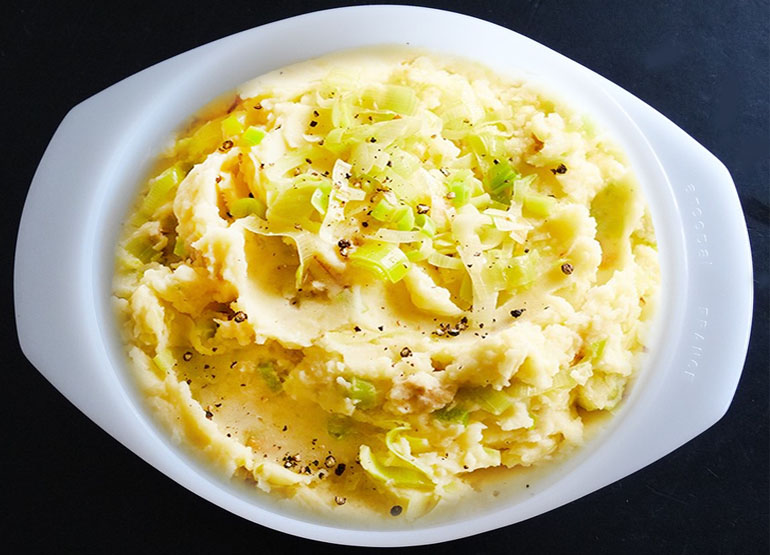Vegetables
Onions
Leek and Parsnip Puree
This puree is fabulous as filling for omelets, crepes and baked vegetables, great as dip or to use as pasta sauce.
Ingredients:
2 large leeks (thinly sliced)
5 large parsnips (peeled and chopped)
4 tablespoons chives (chopped)
5 tablespoons of crème fraîche
60 g (2 oz) butter
Salt and pepper to taste
Makes 4 servings
Directions:
1. Cook thinly sliced leek and chopped parsnips in a pan of boiling salted water until tender.
2. Drain well, place in a blender or food processor and process until smooth.
3. Return puree to pan, add chopped chives, butter, and salt and pepper, to taste. Cook until the puree is well heated through.
4. Remove from heat, stir in crème fraîche and cook over medium heat for 2 minutes. Adjust seasoning if desired.
NOTE: Crème Fraîche is the number one cook's ingredient in the cream family. It comes from a strictly controlled area of Normandy and has all the rich, luscious flavour that the area is famous for. The Normans didn't like diminished flavour of cream from pasteurized milk, so they created their very special way of adding a culture to the cream and allowed it to mature and develop the faintly acidic flavour that was lost in pasteurization. The beauty of this wonderful invention is wonderful creamy flavour, much longer shelf life, and it never curdles and separates when boiled.
RomWell Cookbook
Discover delicious and easy recipes for entertaining...Did You Know?
Leek has a mild onion-like taste, although less bitter than scallion. The taste might be described as a mix of mild onion and cucumber. It has a fresh smell similar to scallion. In its raw state, the vegetable is crunchy and firm.
A traditional Welsh cawl (a form of soup) is made with leek; the cawl is made using root vegetables such as swede, carrots and potatoes and different meats. Lamb is the most popular. Cawl has been enjoyed by the nation since the 14th century and has great significance to the ancient Welsh King Gruffydd ap Llywelyn.
The leek is one of the national emblems of Wales, and is worn—or the daffodil—on St. David’s Day. According to one legend, King Cadwaladr of Gwynedd ordered his soldiers to identify themselves by wearing the vegetable on their helmets in an ancient battle against the Saxons that took place in a leek field. This story may have been made up by the English poet Michael Drayton, but it is known that the leek has been a symbol of Wales for a long time;


